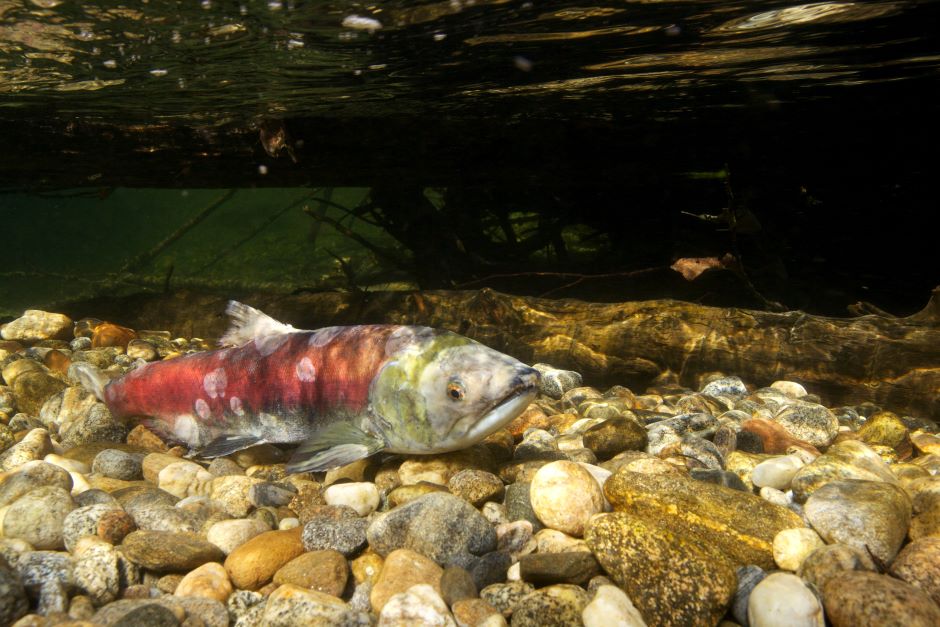Snake River Sockeye Salmon Recovery
 Photo by Hagerty Ryan, USFWS on Pixnio
Photo by Hagerty Ryan, USFWS on PixnioSnake River sockeye salmon were first designated as endangered in 1991 and have therefore been the focus of several policies and initiatives to protect the species under the Endangered Species Act. According to NOAA, the species is distinguished from other sockeye to include “all naturally spawned anadromous and residual sockeye salmon originating from the Snake River basin, and also sockeye salmon from the Redfish Lake Captive Broodstock Program and the Snake River Sockeye Salmon Hatchery Program.
A recovery plan was adopted in 2015 and has continued to help protect species in the Snake River. Several modules were developed within that plan due to the complicated salmonid life cycle. NOAA reports that “The regional issues that affect ESQA-listed Columbia River Basin salmon and steelhead are beyond the scope of any one management plan.” Considering the large area covered in this recovery plan, multiple state, local, private, and tribal agencies have worked together to help restore sockeye salmon populations in the Snake River.
NOAA describes the plan as including the following:
- Recovery goals and objective, measurable criteria which, when met, will result in a determination that the species be removed from the threatened and endangered species list;
- Site-specific management actions necessary to achieve the plan’s goals; and
- Estimates of the time required and cost to carry out the actions needed to achieve the plan’s goals.
Since 2015, the plan has made a great deal of progress despite the challenges that partners have met along the way. The Washington State Government reports that “Snake River steelhead and spring Chinook have stabilized. And Snake River fall Chinook are increasing and some populations (Joseph Creek and Asotin River steelhead populations) are above recovery goals.”
Repairing early infrastructural damage was a significant part of the plan. The Snake River, like many other major rivers, was selected for dam construction sites which caused varying water levels and heavily impacted fish migration. Installing fish passages in these areas allows migration to resume and reopen over 420 miles of habitat in the Columbia River.
Riverbanks were also improved as a part of the 2015 plan in order to protect waterways from climate impacts. Riverbank areas are important to buffer heat conditions and improve habitat conditions and resiliency. The Washington State Government shares that 8,255 acres (293 miles) of riverbank have been restored since the beginning of this project. Many other initiatives involved in the project have been massively successful in improving the habitat and restoring native species populations.
Unfortunately, there have also been complications due to lasting environmental damages and a lack of investment in the continuation of the project. In order to ensure the success of the plan and continued improvement, monitoring in these regions must continue. In particular, it is important that these initiatives continue to be sponsored even when there are limited recreational salmon fishing opportunities, as the focus should always be on restoration and ecosystem protection.
There is still a long way to go for total recovery, but early results of the project have been overwhelmingly positive and, with continued support, should continue to yield results. Salmon are a keystone species, meaning that their presence in an ecosystem totally shifts the environment around them. If the Snake River were to lose sockeye salmon altogether, the region would be facing an ecological change that would have environmental and economic impacts that expand far beyond the river, shoreline, or even surrounding forests.


Pingback: FishSens Magazine | Preventing Another Sockeye Salmon Kill In Columbia River - FishSens Magazine
Pingback: FishSens Magazine | Louisiana Speckled Trout Declines Spark Concern - FishSens Magazine